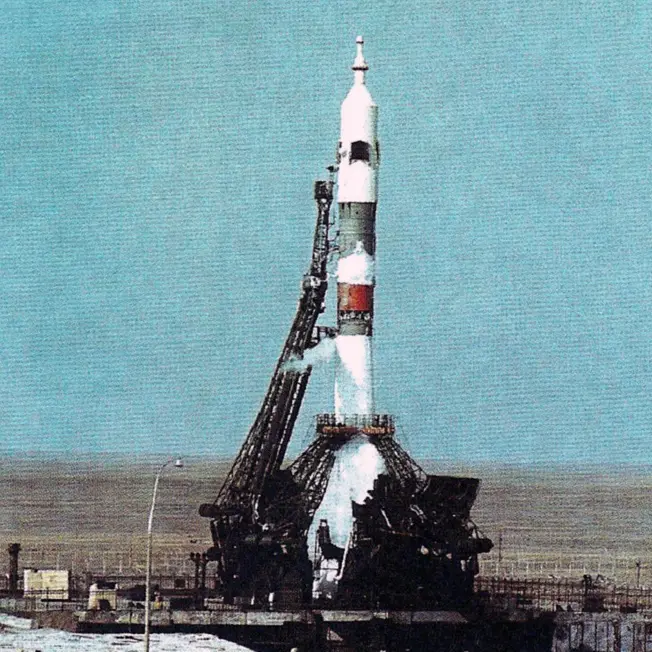Soyuz 18
Launch Success
Liftoff Time (GMT)
14:58:10
Saturday May 24, 1975
Mission Details
Launch Notes
Last crewed mission to the Salyut 4 station. The cosmonauts named the spacecraft Кавказ ("Caucasus").
Soyuz 18
Soyuz 18 was a 1975 Soviet crewed mission to Salyut 4, the second and final crew to man the space station. Pyotr Klimuk and Vitali Sevastyanov set a new Soviet space endurance record of 63 days and the mark for most people in space simultaneously (7) was tied during the mission. The Soyuz 18 crew were the back-up crew for the failed Soyuz 18a mission, carried out that mission's objectives, and continued the work of the previous Soyuz 17 crew. Klimuk and Sevastyanov were launched into space on 24 May 1975 and docked with Salyut 4 two days later. The crew surpassed the Soviet space endurance record of 29 days, set by Soyuz 17, the Salyut's previous crew. The all-time record was held then by the Skylab 4 crew at 84 days. On 3 July, it was announced that the mission would last beyond the upcoming Apollo-Soyuz Test Project. This was the first time the Soviets had to control two unrelated space missions. The cosmonauts exited the capsule under their own power, but it was two days before Klimuk could take a 10-minute walk, and a week before he made a full recovery. This is Soyuz's 32th flight, and 18th crewed flight. The Soyuz is a Soviet crewed spaceship, developed to made manned lunar missions. This version called 7K will fly 4 times on the giant launcher N1, and several tens of times on Proton to fly over the Moon, which will be successful during the mission Zond 4. Soyuz will become the first spacecraft to transport living beings to the Moon during the flight of Zond 5, with two turtles. Subsequently, it is adapted to low orbit and will fly on the Soyuz launcher to serve the Salyut and Mir stations and the ISS.
Low Earth Orbit
1 Payload
6,825 kilograms
Launch Site
Stats
Soyuz
30th
Mission
3rd
Mission of 1975
OKB-1
928th
Mission
32nd
Mission of 1975
1975
47th
Orbital launch attempt

